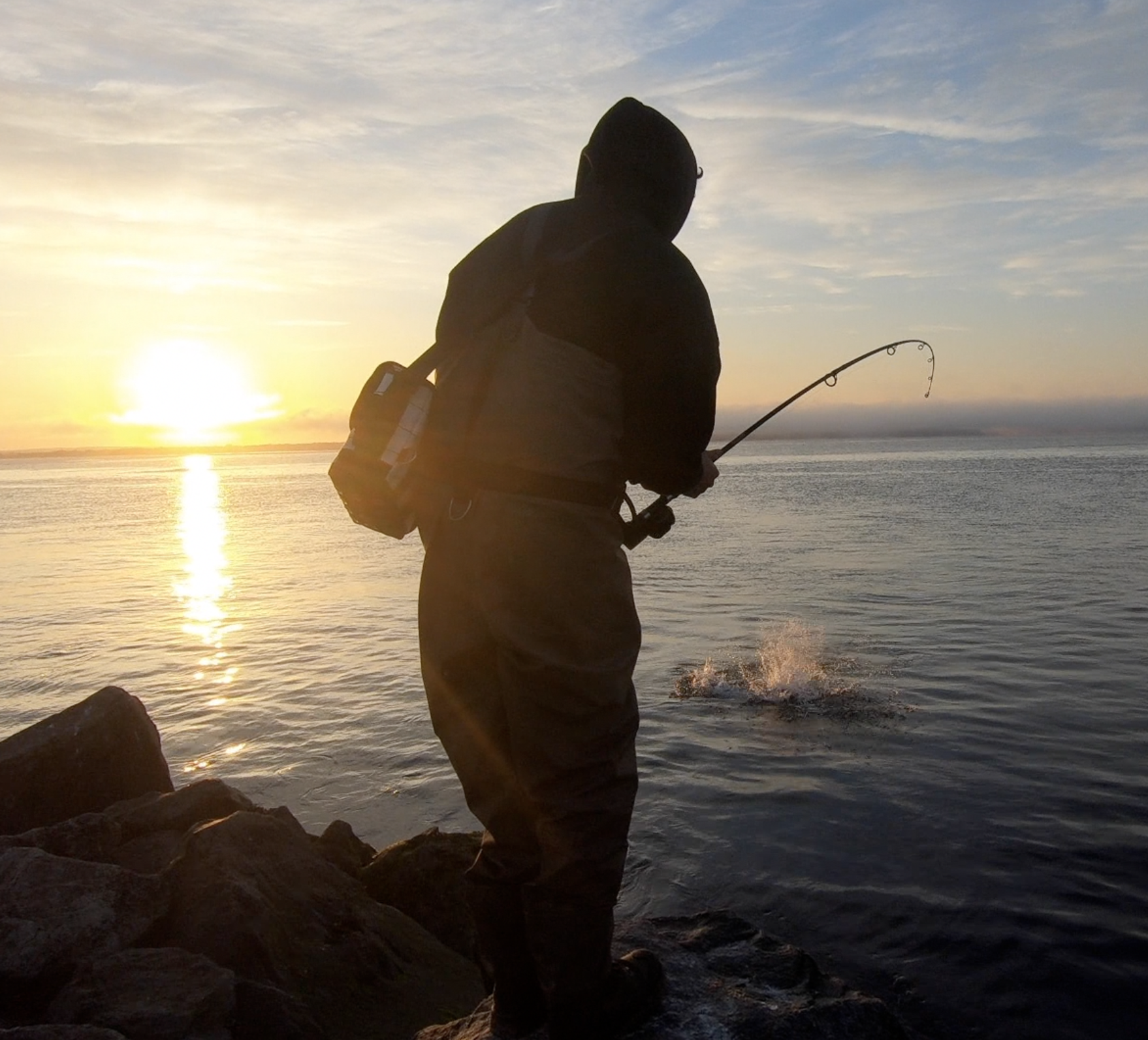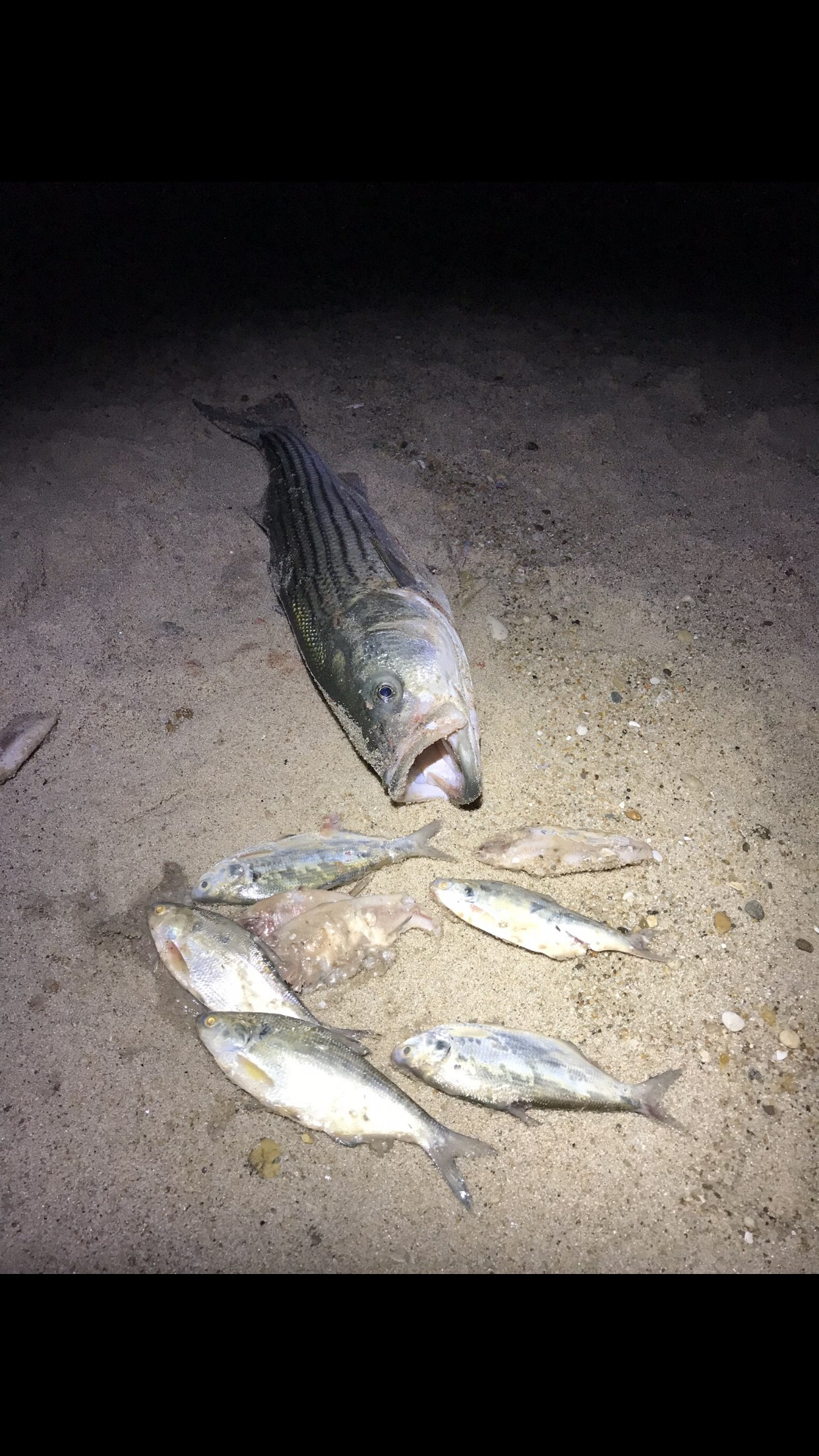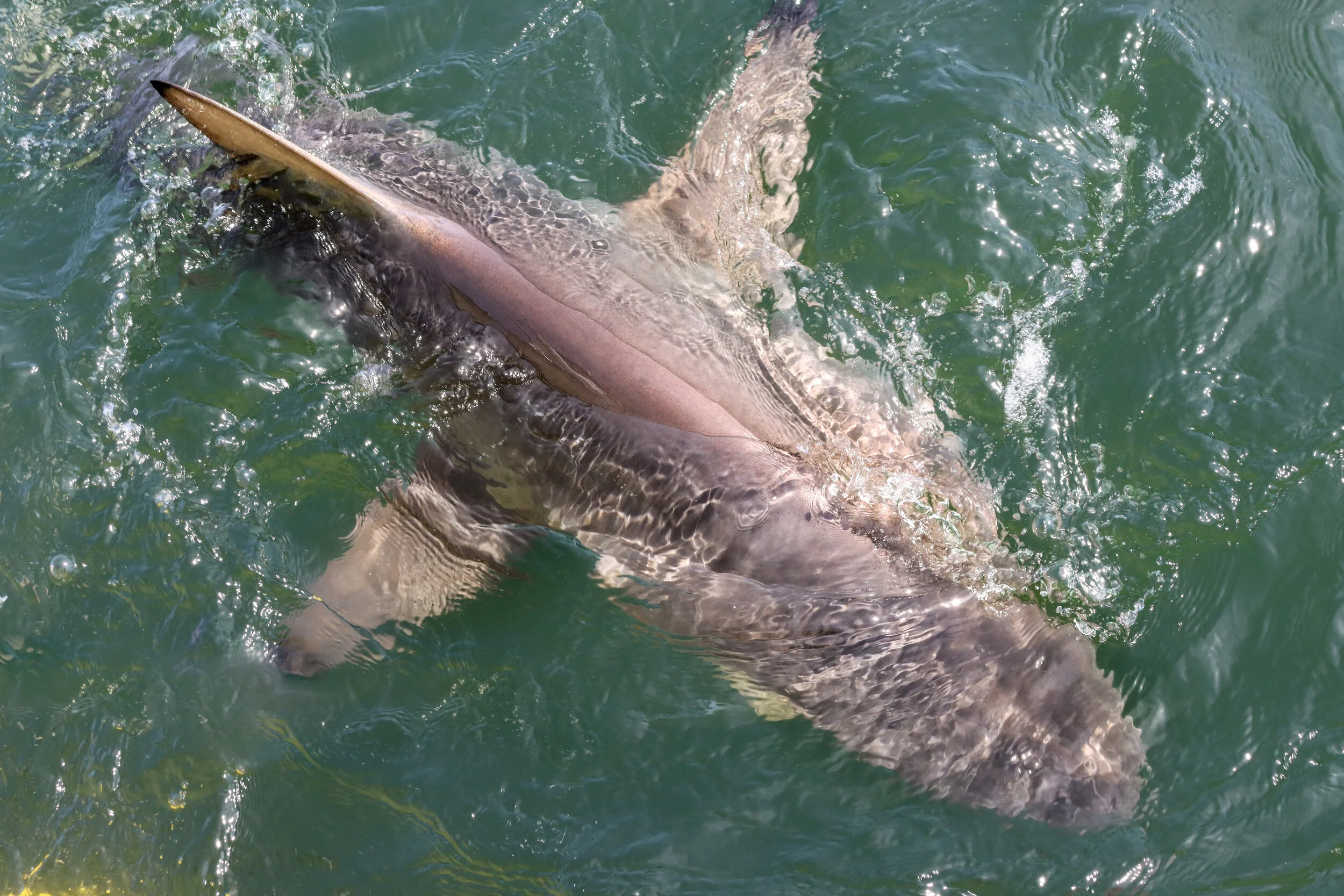The Fall Run Is Upon Us! A look at the Fall Striper Blitz with Photos and Video from Tim Regan (@southforksalt)
Written by Rich Nardo (@ntvli)
Photos & Videos from Tim Regan (@Southforksalt)
Long Island fisherman, rejoice! The summer doldrums are behind us and soon enough those monster Stripers are going to be hitting your line like a freight train again. Of all of the amazing species we have in our waters at various points in the year, few garner more respect than New York’s official State marine fish, The Striped Bass.
Morone saxatilis is an incredibly dynamic species - athletic and complex in their behavior - that deserves every bit of their reputation as a prized game fish. For this month’s #NTVBlog, we take a deeper look at the Striped Bass and the sacred Fall run Long Island gets every year.
Luckily, we are honored to have photography and video content from a great Long Island fisherman and photographer, Tim Regan (@SouthForkSalt). In addition to his amazing Instagram and YouTube pages, Tim also does a weekly Long Island Fish Report for On The Water Magazine, which you can check out here.
Some Background on The Striped Bass
The Striped Bass goes by many names - Atlantic Striped Bass, Striper, Linesider, Rockfish - but no matter what you call it, it’s a pivotal predator in coastal and marine ecosystems along the Atlantic. They have stout bodies with seven to eight horizontal stripes on each side that extend from gills to tail. Their striking coloration can range from light green to olive, steel blue, black or brown on top while the underside is either white or silver iridescent.
Size-wise, Stripers are the largest of the temperate basses and can grow up to five feet and get close to eighty pounds. How large a specimen will grow can depend on where they live and how old it is, which can be up to thirty years old. More commonly, mature Striped Bass will be in the 20-40 pound range and 20-35 inches long. Striped Bass are anadromous, meaning they start their lives in fresh water but spend most of their lives at sea with the exception of when it is time to spawn.
Their diet consists mostly of plankton, insects, crustaceans and small fish depending on where they are in their life cycle. The larvae will feed on zooplankton, switching to small shrimps and other crustaceans as well as worms and insects when they’re juvenile. When they reach maturity, Menhaden (commonly known as Bunker) become the top item on the Striper’s menu, but they’ll also feed on alewives, herring, smelt, eels, flounders, mummichogs and silversides.
On the other side of the coin (meaning Stripers as food), they have a firm white meat with a mild flavor. They’re a seafood favorite throughout their range as they can be pan-seared, grilled, steamed, poached, roasted, broiled, sautéed or deep fried. It can also be eaten raw or pickled. According to NOAA, “U.S. wild-caught Atlantic Striped Bass is a smart seafood choice because it is sustainably managed and responsibly harvested under U.S. regulations”. That being said, there are concerns recently about the health of the fishery that should be kept in mind. Conservation information can be found later in this blog.
Here are a few more fun Striper facts to round out this section:
The Striped Bass is the state fish of Maryland, Rhode Island and South Carolina. They’re also the state saltwater fish of New York, New Jersey, Virginia and New Hampshire. The fact that all of these states hold the species in such high esteem shows the importance of the species to the Atlantic ecosystem.
Striped Bass don’t have eyelids, so when the sun comes up, they retreat to deeper water to avoid the bright light of the sun.
The female Striped Bass is a powerhouse. They grow larger than males and can lay up to three million eggs.
A Brief History of Striped Bass Fishing
Striped Bass fishing along the Atlantic coast dates back to the Colonial period. In 1607, Captain John Smith wrote about the quality of the waters in the Chesapeake Bay, a pivotal Striper breeding ground. In 1634, William Wood’s “New England Project” used seine nets to capture thousands of bass per catch. The colonies would salt the bass and store them as an important food source during the winter months. The excess was used as fertilizer up until 1639 when the state of Massachusetts observed that the fishery was significantly depleted. This led to the eventual passage of the National Environmental Policy Act of 1969 which would later evolve into the Magnuson-Stevens Act and other legislation to protect regional fisheries.
Striper fishing has remained important to communities throughout the Atlantic region carried on today on Long Island by legends such as Bill Wetzel, John Skinner and Zeno Hromin. Montauk in particular is considered one of the best surfcasting spots in the world!
Common Techniques for Striper Fishing
Depending on who you ask and whether you’re fishing from a boat or the surf, you’ll hear a million different “best approaches”. When surfcasting, topwater lures are usually an effective move. A lot of fishermen also rely on live and dead bait. I’ve had multiple people tell me that every Striped Bass they’ve ever caught has come on live eels, but bunker, clam, sandworms, herring, bloodworms, mackerel, shad, bluegills, worms and crayfish are also commonly used depending on where you’re fishing (always match the hatch!). Bucktails, silver spoons and shad baits are also used effectively. Another worthwhile note when fishing for Stripers is to use circle hooks. It’s been proven that an alarming number of fish die after being caught and released, and circle hooks cause less damage and therefore could cut that ratio down.
Striper Migration Patterns
Depending on the time of the year, Stripers can be found from the St. Lawrence River down to the Gulf of Mexico (from Florida to Louisiana). During the spawning season (from April to June), there are four important breeding grounds - Chesapeake Bay, Massachusetts Bay/Cape Cod, the Hudson River and the Delaware River. The general migratory pattern finds schools spending the winter months down south before moving north in the warmer summer months as they search for their preferred temperature range of between 55 and 68 degrees Fahrenheit. As one would expect, this results in two big migrations - moving north in the Spring and south in the Fall. These are the key times for Striper fishing each year.
The Spring migration starts in the deeper waters off of Virginia and North Carolina, making stops to spawn in the Chesapeake Bay as well as the Delaware and Hudson River on their way to summering in the waters off of New England. In the Fall, Stripers head south before the chilling of the northern waters. The timing also syncs up with the timing of their favorite baitfish including bunker and silversides coming out of the bays to head into the ocean. This gives the schools of bass the opportunity to fatten up for the winter ahead as they blitz the emerging bait pods.
The first couple of years of a Striper’s life are a bit more sedentary as youngsters will usually stay around the rivers, bays and estuaries where they were born. Juvenile Stripers can be caught in the areas of their birth in the Spring once the water temperature hits 45 degrees fahrenheit. During this time, they can be caught during the day when they seek the warmth of the shallow water. Once they begin to move out to the ocean, they can be caught around the ocean beaches before they head out to deeper, cooler water during the summer.
During the Fall migration is when you’re more likely to catch the proper cows that have been bulking up all summer. These months bring a desire for food that coaxes the fish out into the light they usually avoid and brings them closer to the shore as they look for baitfish. This is when surfcasters can target them, however, they’ll often stay a bit out of range of the shore leaving the advantage to those fisherman out on boats.
Striped Bass Conservation
In the 2018 stock assessment, it was found that Striped Bass are being overfished. While the Atlantic States Marine Fisheries Commission do a great job regulating Striper fishing, the demand for these prized game fish has created a difficult situation. New York State currently engage in monitoring programs, recreational and commercial size minimums, recreational creel limits and commercial quotas to help keep the fishery healthy.
This is not the first time the Striped Bass population was threatened. In 1973, Atlantic Striped bass commercial landings hit an all time high at six million metric tons. Shortly after, a major collapse occurred. In addition to overharvesting, habitat loss and man made barriers such as dams that prevented bass from reaching their spawning habitat also played major roles in this decline in population. As a result, fish hatcheries were launched to offset failing stocks.
Since that time, Striped Bass have rebounded beautifully, even being considered a “poster child” for “successful interjurisdictional fishery management of coastal migratory species”. This continued through the 2014 survey that declared Striped Bass were no longer overfished. In 2015, acoustic tags were incorporated in the monitoring process. These played a huge role in subsequent studies, including a pivotal 2018 study by the Northeast Fisheries Science Center, that showed Stripers were again being overfished and a decline in the numbers had fallen below an acceptable sustainability level. According to the study, if additional regulations weren’t put in place, it could reach a level where the Striped Bass population would be unlikely to recover.
The Atlantic Striped Bass Conservation Act and the Atlantic Coastal Fisheries Cooperative Management Act are doing great things to help prevent that from happening. The harvest limits have been set at a level that will encourage an increase in spawning stock to match or exceed the harvested fish. State-by-state catch quotas and minimum size limits have also been implemented. Further efforts include gear restrictions, seasonal closure of fisheries to protect spawning fish and bycatch monitoring and research programs. Additionally, it was deemed illegal to fish for Atlantic Striped Bass in federal waters (between 3 and 200 miles offshore).
As fishermen, we can do our part to help protect the species as well. Always release large mature females that could produce the next generation of Stripers. Also, release the juvenile schoolies that the population needs to mature and breed. it’s important to use equipment that will give released fish a better chance to survive such as the aforementioned circle hooks and learn about best practices for releasing fish. Bottom line, take your release seriously!
A Fisherman’s Tale from Long Island Sound
Believe it or not, the largest Striped Bass ever taken by angling took place right here in the Long Island Sound! While the angler, Gregory Myerson, technically took the fish out of Westbrook, Connecticut off the Outer Southwest Reef, it’s pretty awesome to know these leviathans are out there in our waters!
The fish was 54 inches long and had a girth of 36 inches, with a weight of 81.88 pounds, It was taken with a drifted live eel on the night of August 4th, 2011and the fight took Myerson about 20 minutes to haul the fish in.
A second hook and leader were also discovered in the fish’s mouth, meaning another angler hooked up with a record breaker, but lost it. Think about that next time you hook up on something this Fall!
References:
NOAA Fisheries Report - https://www.fisheries.noaa.gov/species/atlantic-striped-bass
DEC NY Page - https://www.dec.ny.gov/animals/6953.html
FWS Fisheries Report - https://www.fws.gov/fisheries/freshwater-fish-of-america/striped_bass.html
Hudson Valley Report on newyorkupstate.com - https://www.newyorkupstate.com/hudson-valley/2019/09/changes-to-striped-bass-fishing-regulations-on-hudson-river-likely.html
Striper Space - ttp://www.striperspace.com/finding.html
Striped Bass on Wikipedia - https://en.wikipedia.org/wiki/Striped_bass


















Ask any wildlife photographer or explore based on Long Island and they’ll tell you that our home turf does not get nearly the credit it deserves when it comes to species diversity. In fact, I think it’s safe to say that most people think Long Island has a couple of raccoons, a possum here and there, and way too many deer out east and that basically sums it up.
This couldn’t be further from the truth. So for this article, we worked with some of the best wildlife photographers based on Long Island to highlight 10 species that most people might not know we have here.